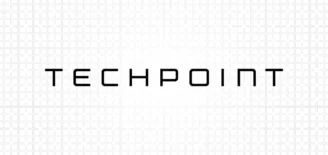How a Meaningful Employee Value Proposition Can Help Organizations Attract and Retain Talent
About the author: Dawn Griffin is chief human resources and diversity officer for TRIMEDX
Employees are integral to the success of any organization. When an organization supports and drives a positive culture, they provide an environment for their employees to spark innovation, drive productivity and bring excellence to every interaction. To attract and retain talent for the long term, organizations should intentionally create an environment designed to empower associates, support their growth and advancement, and recognize and reward their continuous improvement.
TRIMEDX, which has been recognized as one of the most engaged workplaces in the country and one of the most inspiring workplaces in North America, has found an effective way to create this environment is through a purposeful employee value proposition (EVP). This EVP clearly demonstrates the company’s commitment to providing associates with ongoing training, development, upskilling, progression in the workplace, inclusion and belonging and other benefits that reinforce a rich culture of opportunity and support.
An Employee Value Proposition (EVP) defines company culture
An EVP should clearly define the hallmarks of a company culture. For example, TRIMEDX focuses on five pillars: people, rewards, organization, work and opportunities. Our company strives to ensure employees are recognized for their excellent work, able to grow within the company, feel part of an inclusive team and are empowered to do their job. These specific outcomes drive our culture, and our goal is that employees and candidates will choose TRIMEDX for their careers based on its professional impact, leadership and culture.
Harvard University’s Division of Continuing Education (DCE) has found people working in companies with a positive corporate culture are “happier, healthier, more productive and less likely to leave.” In addition, research shows companies recognized for their positive cultures see higher average annual returns.
While many companies may claim to prioritize a healthy culture, an EVP clearly states how an organization will engage employees and achieve specific outcomes. Establishing an EVP informs employees and job candidates about the type of culture the organization aspires to create, while also giving company leaders clarity about what to focus on and work toward in interactions with employees.
According to Harvard DCE, workplace culture is a “commitment that every person in the organization, including senior leadership, will model their behavior to support those values.”
To craft a successful EVP, companies should look at engagement data and sources of employee feedback such as exit interviews or stay interviews. A wholistic review of why employees leave, why they stay, and the overall philosophy of the organization will provide critical insight into the persona of associates and what is important to them in an organization. The data and insights from these sources can help the organization create programs and enhance communication that is meaningful to employees.
Opportunities for growth are key
Growth prospects—including professional development, training and upskilling—are an essential part of any EVP. No matter what stage of their career an employee is in, organizations should offer opportunities to grow professionally.
Millennials, the largest generation in the labor workforce, are most likely to switch jobs for better opportunities. Gallup has found they are also the least engaged generation in the workplace. In addition, Deloitte has found employers should develop “robust training and leadership programs, with a real and tangible focus on diversity” to attract and retain Gen Z workers. These findings illustrate the importance of creating an engaging workplace with opportunities for growth. An EVP is a purposeful, intentional way to drive engagement among associates of all career levels. If associates can see appealing opportunities in their current workplace, they’ll be less likely to look for advancement elsewhere.
Empower employees to succeed
Empowerment is another critical aspect of an effective EVP. Employees need to be empowered to do their job well. The first step of empowerment is ensuring workers have the knowledge, tools, skills and support to complete their tasks properly, but it’s also about mindfully and intentionally setting up individuals for success.
Leaders should learn about their individual staff members’ strengths and goals because empowerment can look different for everyone. This could mean encouraging employees to work on projects meaningful to them personally; giving them the chance to develop a new skill they’re interested in; giving them opportunities to collaborate with others; or providing them with flexibility in how work gets accomplished.
Flexibility in how work is completed is a major factor in ensuring employee satisfaction. While not every job can be catered to a specific set of preferences, giving at least an element of choice in each role can make people feel more valued, trusted and engaged. Ultimately, this leads to better performance at work.
Recognizing and rewarding workers when they do their job well is also essential. In any EVP, organizations should have resources and tools available to ensure employees know they are valued and appreciated.
When employees are empowered to do their work, rewarded for excellence, and given opportunities to advance within the company, company success will follow. Last year, an independent study found TRIMEDX was the top clinical engineering provider, with extremely high client satisfaction scores. This achievement is directly attributed to our associate contributions and commitment to excellence when serving clients.
Continue to listen and adjust
In the same way companies should listen to employees when creating an EVP, it’s vital to listen to them and make sure it’s working after implementation. If one of the EVP goals is making people feel part of an inclusive team, employers should seek feedback to understand if their employees feel the company is achieving the objective.
Organizations can gather unfiltered opinions and perspectives from employees through engagement surveys. If organizations aren’t seeing results that align with the EVP, they can then apply employee feedback to adjust or make improvements.
From design to implementation, and then continuous improvement, employee wellbeing should be at the center of any employee value proposition to achieve the desired outcomes for the organization and its people. Providing a clear EVP to associates and communicating what it means to them leads to a stronger workforce and a company culture the employees understand, embrace, connect strongly with and appreciate.
About the author
Dawn Griffin is chief human resources and diversity officer at TRIMEDX. Dawn brings over 20 years of experience and leads TRIMEDX’s human capital strategy, including talent acquisition, compensation, talent development, organization development, culture, and associate engagement. Throughout her career, Dawn has been focused on global private equity companies in automotive, life sciences, and healthcare. She is a board member for The Goodwill Foundation of Central and Southern Indiana and earned a bachelor’s degree from Indiana University.




